Eight centuries of painting India in Zurich 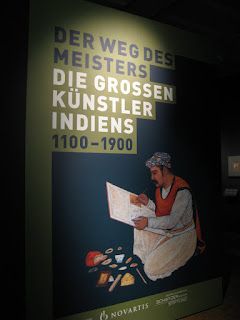
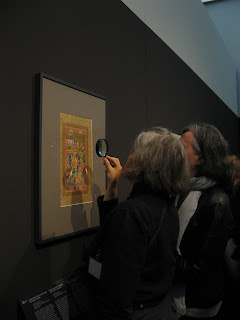 The path of the masters. The great artists of India, 1100-1900 '
The path of the masters. The great artists of India, 1100-1900 ',
exhibition that recently opened Rietberg Museum (May 1 to August 21) in Zurich, is a fascinating and interesting approach to the history of painting in India. Eight hundred years compressed into 240 paintings of 40 masters, whose legacy has helped to enrich the national identity is now known worldwide.
The exhibition is special and unique. "is the result d and decades of careful
 TIO investigates n. Pa ra identify each of the artists had to descend deciphering the signatures of size m ic ROSCOP , search for records or s of artists by name and genealogy a, oh ac er
TIO investigates n. Pa ra identify each of the artists had to descend deciphering the signatures of size m ic ROSCOP , search for records or s of artists by name and genealogy a, oh ac er tions compared
matic system Styles said Jorrit Britschgi, project director and curator.
landscapes, animals, icons of the Hindu religion, wars, sultans and emperors were recorded and emerge in the eyes. The works have an extraordinary beauty and delicacy.

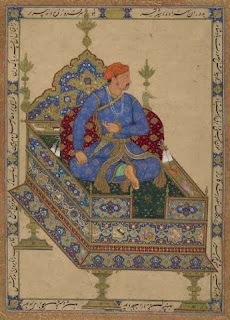

abound in prune, they can be captured with the help of magnifiers. The show opens with manuscripts of the twelfth century, and closes with twentieth-century paintings in large format in which
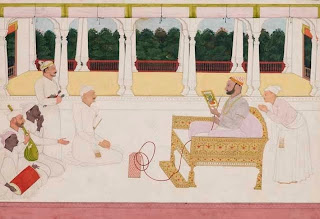

shows the influence of photography.
The forty artists are men. Where were the women. There were no painters? The answer is yes they unfortunately could not identify a sufficient number for submission. The world of each artist is backed by several of his works. There is a chronological approach, rather they have used other considerations, one of them the land.
Fig. 1 / Autoretro cough and portraits of artists (Daulat) 2/The Prince Salim on his throne (Mansur and Manohar) 3 / Krishna playing blind man's buff (Manaku) 4 / Raja Balwant Singh of Jasrota ndo provides a paint with the painter Nainsukh (a contributed to Nainsukh) ; 5/Dialéctica ( 'Abu'l Hasan). Photos © Museum Rietberg Zürich. Some artists are part of a family and what is highlighted are the differences in styles.
"If, for example, one sees the c Arrero
Manaku the two brothers who were captured and Nainsukh Acito in the studio of his father in Guler, the differences are interesting s. Whereas qu e Manaku was closer to the traditional painting style of his father was Nainsukh
established in another court and there developed his own unique pictorial language, which emphasizes the use of new naturalistic elements, "says responsible for curaturía.
The exhibition also reveals the context surrounding teachers, travel or travel into and out of India. The painter Farrokh Beg (1580-1619) was formed in Khorasan, in central Asia, and worked in Kabul (Afghanistan), Lahore (Pakistan), Bijapur and Agra (India), seeking, among others, patrons who support his career. Museum Rietberg
conceived the show, initially, only seen in Zurich, but then, given its importance, the Metropolitan Museum in New York and joined the host from September, although eighty percent. The works come from loans of more than forty institutions, including museums, art galleries and private collections in India, Europe, USA and the Middle East.



The stage is complemented by the lights, colors and floor. The space devoted to each of the painters is
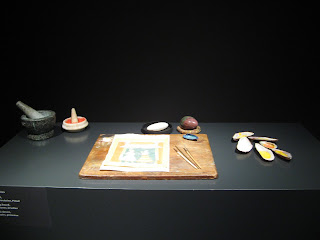
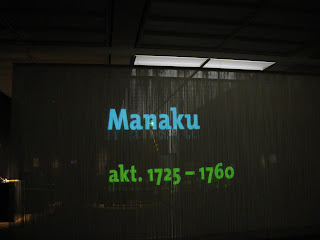
as a kind of split screens in blue, orange, green and yellow. The first room is a dynamic space in which delicate blend white curtains to separate the room for live events, with the materials and products that painters used, and a children's video, produced in conjunction with a Swiss school.
An ambitious two-volume publication in English, which could serve as a basis for future


research, accompanies the exhibition. In one room you can see the Indian film director Amit Dutta,
Works of an Indian Painter on Nainsukh (1710-1778), the largest eighteenth century Indian painter. The work of distinguished artist is recreated in this process visual images are loaded and seem magnetism take their own life.
For the density and abundance of information, visit requires several hours. To this must be added to the list of events to be held during the exhibition is extensive. One of the most anticipated events is the discussion group between two excellent contemporary musicians: The American
Philip Glass and the Indian
Trilok Gurtu, the latter ending with a concert Table. Indian Perceptions

Indian journalists Bharadwaja Rangan (Chennai), Aveek Sen (Calcutta) and Swaminathan Kalidas (Delhi), art critics who came especially for the inauguration, were happy and proud.
"We were in India a sample as the Rietberg, covering many centuries and so many talented artists. The exhibitions that we often include some parts of our history of painting ", noted Kalidas, who hopes that this project can be seen in his country.
From left to right: Bharadwaja, Aveek and Kalidas, respectively. Aveek Sen, a specialist in European art, she described her feelings with a strong sensitivity and intensity.
" is a wonderful experience. It's something surreal to see the art of my country, something that is deeply familiar in form and detail, in a country abroad (Switzerland), presented in German and in the museum where Richard Wagner composed my favorite opera (Tristan and Isolde) ". Rangan Bharadwaja as stated:
"It's a fantastic exhibition, because painters revalues \u200b\u200bdenied at the time, and rescues the art and painting techniques daily, for which I have been losing a bit of admiration, such overexposed time because they are there all the time. " Photos © Liana Cisneros, with the exception of five belong to the Museum Rietberg.
 Date: 24/05 at 19:30
Date: 24/05 at 19:30  Date: 13/05 at 19:30, 14/05 at 19:30 and 11:30 am 15/05 to
Date: 13/05 at 19:30, 14/05 at 19:30 and 11:30 am 15/05 to 



